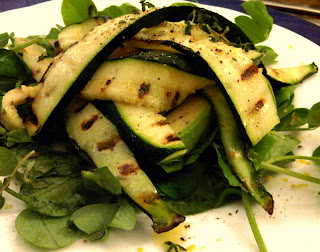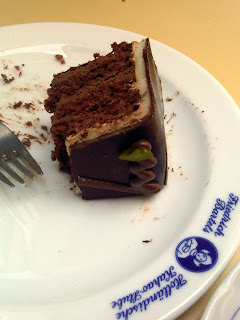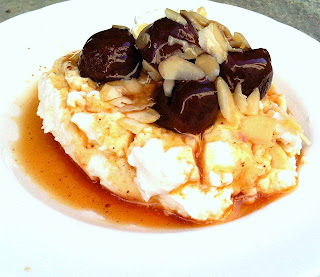There are several ice-cream flavours that make me nostalgic for childhood holidays in Devon Coast. One is mint chip-chop chip (well described by David Lebovitz in his blog) and another is raspberry ripple. I guess a third I have not seen since I was seven is tutti frutti (sic), but I always regarded that as a little suspect with it's strange nondescript sweet flavour and hard sweet lumps that may have been crystallised fruit.
Anyway, when the raspberries are in glut we never manage to eat them all before the start to collapse and go off. A few weeks ago, in order to save a batch we had been given by G, I made an approximated raspberry coulis with some syrupy strawberry jam sitting in the fridge. And today it found a use as the crimson swirl of raspberry in the ice-cream.
This recipe is from the Waitrose website, amended slightly by me, as ever.
Raspberry ripple ice-cream

568ml carton of double cream
300ml whole milk
1/2 vanilla pod, split
6 large organic free-range egg yolks
50g caster sugar
300g raspberries
icing sugar
Put the cream, milk and vanilla pod in a heavy-based pan and heat until just below boiling point. Be warned, I burnt the bottom of the pan, which gave the whole ice-cream a faintly burnt taste which I intend to pretend is intentional and very modern.
Remove the cream from the heat and allow to cool slightly. Meanwhile, beat the egg yolks and sugar together in a bowl until thick and creamy. (I forgot to do this, it doesn't matter terribly).
When the cream mixture has cooled at least to room temperature, place in a bowl over a pan of gently boiling water. Sir in the egg yolk mixture (and sugar if not already mixed in), whisking constantly. Heat the bowl very gently, stirring until the custard thickens enough to lightly coat the back of a wooden spoon. This can take anything between 12 mins and half an hour depending on how low the heat is.
Making the custard
Strain the custard into a clean bowl and leave to freeze. It will need periodically stirring as it freezes to break up the ice crystals, if you don't have an ice-cream maker.
Meanwhile, purée the raspberries with a blender. Sieve to remove the pips. If the purée tastes tart, sweeten with a little icing sugar (more than you think - things always taste less sweet when frozen).
Raspberry purée, lovely crimson colour
When the ice-cream has about half frozen, and is slushy but not solid, spoon the raspberry purée through the thickened mixture, not so much that it becomes a uniform pink, just enough to fill the beautiful yellow custard with vermilion swirls. Freeze overnight, and take out about 1/2 hour before needed to allow to soften.
The ice cream, swirled with raspberry


















































